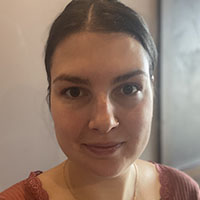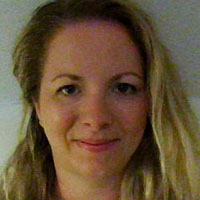Names can be magic. Your first crush. Your soulmate. Overheard in a crowd or resurrected in a dream, their names pluck strings of memory, waking us to forgotten love and heartbreak.
The names of places can be magic, too; incantations to conjure daydreams of adventure. Timbuktu, Kukamonga, Outer Mongolia. To my Western ears, these words whisper mysteries in breath scented of spices and sounding like little bells. Names that are commonplace to me, Chicago, Washington, and the Great Smoky Mountains, and complicated by years of repetition and personal knowledge, may beckon temptingly to others and open vistas of possibility.
Until recently, Budapest was one of the mysterious names to me, a placeholder for the unknown. Like many Americans, my knowledge of geography was, and remains, sadly rudimentary, though increasing slowly as we travel. I didn't know if Budapest was filled with souks and camels, or snowy onion domes, or bustling financiers and towering glass skyscrapers.
To my surprise, as we traveled to Hungary on Flixbus in October, the landscape outside our windows wasn't as much exotic as familiar. The gently rolling pastures and leggy trees strongly resembled the rural landscape in Tennessee. I half-expected to see billboards for Dollywood and Cracker Barrel around the next bend.
Our bus driver's choice of music, 1980s American pop hits, added to the illusion that my husband and I were back home in Tennessee. Huey Lewis and The News, Madonna, and Michael Jackson serenaded us as the sun slid lower over the familiar green landscape. I flicked on my little book light and cross-stitched, falling into silent reveries about family vacations with my parents and younger sister.
As you may already know, Budapest is a romantically beautiful city. Though continuously inhabited for thousands of years, most of Budapest's ancient and medieval architecture was destroyed in conflicts. Our first destination the morning after our arrival, Matthias Church is a rare survivor from the 13th century, though it doesn't much resemble its origins as a small Gothic church. Now a soaring baroque edifice with an iconic colorful roof, Matthias is flanked by Fisherman's Bastion, a sprawling stone barricade studded with fighting parapets built at the cliff's edge to defend against invaders from the Danube River below.
Much of Budapest's architectural glory dates to the late 19th and early 20th centuries when Hungary flourished in the wealthy and powerful Austro-Hungarian empire. Pest, on the eastern bank of the Danube, is rich with Neo-Gothic, Neo-classical, Neo-Renaissance, and Art Nouveau architecture built during this opulent era. As you stand on the high bank of Buda Castle and gaze across the Danube, the 19th-century glory of Pest spreads before you like a visual feast.
After walking across the Elizabeth Bridge to lunch (the famous Chain Bridge was closed for renovations), we toured the Great Synagogue, the second-largest Jewish synagogue in the world. We arrived 10 minutes too late for entry at our last destination of the day, St. Stephen's Basilica, but my capacity to absorb information and gorgeous architecture was pretty much maxed out by then anyway. After 17,000 steps per my pedometer app, we were happy to end the day relaxing at a "ruin bar" near our Airbnb. Budapest's famed ruin bars began as squatter venues in abandoned buildings in the early 2000s and grew into a cultural phenomenon for patrons who appreciated the bars' eclectic, bohemian vibe.
On our second morning, we visited the Hungarian Parliament, the third-largest parliament building in the world. Standing right at the river's edge and surrounded by the majestic emptiness of Kossuth Square, the Parliament rises unchallenged into the sky, immense and palatially beautiful. Every window is ornately framed, crenelations climb every corner, and statues of kings and warriors stand in niches along the walls. Between sprawling wings, the central dome rises in splendor, its dark-red roof topped with a single white spire.
In contrast to the lofty majesty of Parliament, a small exhibit beneath Kossuth Square memorializes Bloody Thursday, the massacre of dozens of Hungarian protesters by Soviet military forces in 1956. We descended the steps to find black-and-white photographs and looping video clips flickering in a gloomy tunnel. In one enlarged photo, a woman's stocking-clad legs emerge from a tangle of lifeless bodies, her skirt bunched high above fleshy thighs. On the day of the massacre, I thought, this woman did the same things I did this morning. She got dressed, brushed her hair, and probably drank a cup of coffee before leaving her house. She didn't know she'd never come home again.
In a somber mood, I wandered to one dark end of the tunnel, where a Soviet tank roared directly toward me on a filmy screen. Here, the exhibit designers put us briefly into the shoes of the protesters, and though the intent was overt and unsubtle, it was still viscerally powerful. I steeled myself for the obvious conclusion, but the explosion of imaginary bullets still startled me into tears of horror. I climbed the stairs back to chilly daylight and the beautiful, silent palace with relief.
Near the Parliament, a display of bronze shoes sits at the river's edge as a memorial to Jews murdered during World War II. Hundreds of thousands of Hungarian Jews died at Auschwitz, where many were marched directly from packed cattle cars into the gas chambers. For others, death came as they stood in bare feet beside the Parliament building. Armed Hungarian Fascists ordered Jewish men and women to remove their shoes before shooting them at the river's edge. Their bodies fell into the Danube and washed away. No graves to dig.
After our intense morning, we needed reflection and rest. We grabbed the last empty table at a sidewalk cafe we found on Google Maps and enjoyed Hungarian goulash and goose livers while wearing our coats and hats. Between courses, I wrapped myself in one of the red fleece blankets provided by the cafe for this purpose. On the other side of the narrow tree-lined street, a picturesque yellow apartment building rose above our heads, its curved Art Nouveau front highlighted by the early afternoon sun emerging from the clouds. The conviviality of eating good food in the sunshine, and watching passersby with baby strollers and dogs, was a welcome change from the cloudy, somber morning.
After lunch, we walked along Andrassy Avenue, a broad, tree-lined boulevard lined with stunning Neo-Renaissance mansions and many iconic buildings, including the Hungarian State Opera House. Our final destination awaited at Széchenyi Thermal Baths, but we strolled, stopping to marvel at and photograph examples of Budapest's beautiful architecture. Safe from violence and surrounded by beauty, I felt a wave of gratitude wash over me.
"I'm suffused with well-being!" I announced ecstatically to my husband, who responded with a wry grin. He's familiar with my hyperbole, but he was enjoying himself, too.
The next day, we would ride the bus back to Zagreb, our home for another month before our annual return to the USA in December. This time, as we stood beside the bus at the Hungarian-Croatian border while officials screened our passports, we chatted with a young German-Peruvian family. As their young children collected weed bouquets from the roadside, we traded travel stories and recommendations with the parents before climbing back on the bus for the final leg to Zagreb.
My mind was full of Budapest, one of the most beautiful cities I'd ever seen. Its complicated history defied easy categorization, but no place is as simple as souks and camels, or grits and banjos either. Like the green Croatian-Hungarian landscape outside my bus window, Budapest was a little familiar now. What I'd seen and experienced only increased its allure, and I was even more eager to return to Budapest than I'd been to go in the first place. The magic in the name of Budapest has changed, but it burns more brightly than ever.
 Julie
Julie


















